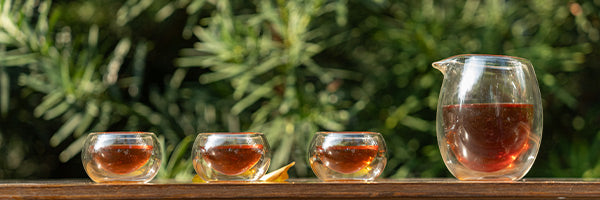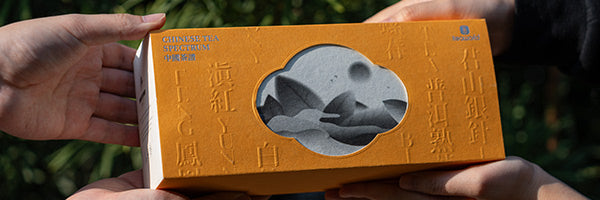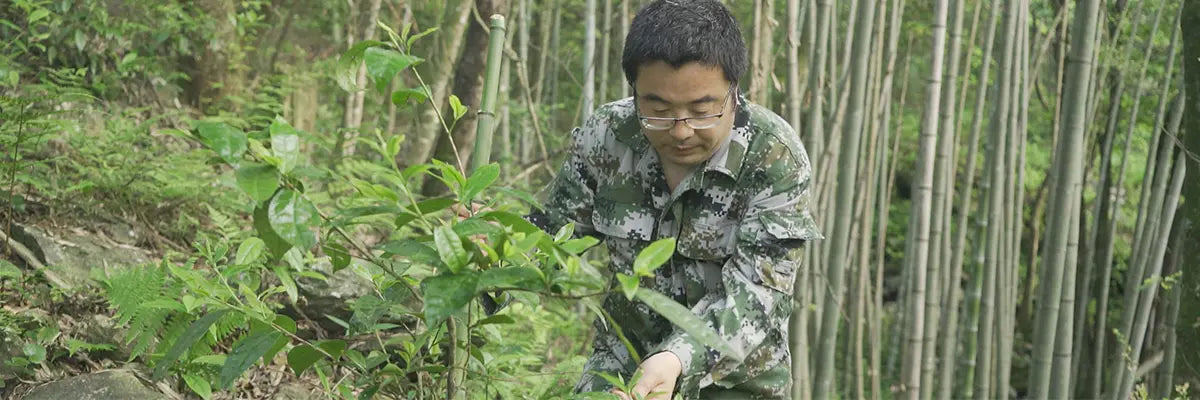Чай улун, также известный как цинча , возник во времена династий Мин и Цин. Разработанный фермерами-чайниками в Аньси на основе метода производства зеленого чая, он сначала распространился в северной части провинции Фуцзянь и Чаочжоу в Гуандуне, а затем добрался до Тайваня.
После дегустации чая улун, его стойкий аромат и сладкое послевкусие обеспечили ему репутацию «чая красоты» и «чая здоровья». Классический и высококачественный чай улун считается одним из лучших листовых чаев и его определенно стоит попробовать.
Легенда о формировании аромата чая улун

Согласно легенде, в древние времена фермер, выращивающий чай, собирая свежие чайные листья на горе, клал их в бамбуковую корзину и нес на спине, спускаясь с горы. Во время этого спуска свежие листья в бамбуковой корзине толкались вверх и вниз и качались из стороны в сторону. Говорили, что столкновение чайных листьев в корзине создавало цветочный аромат.
Чайный фермер, сделав это случайное открытие, включил его в процесс обработки чая, что дало начало технике «Цзуоцин». В то время, с ограниченными научными и технологическими достижениями, чайный фермер не мог объяснить это загадочное явление. В результате этот тип чая стал известен как чай Улун, что означает запутанный или беспорядочный чай. Таким образом, чай Улун стал общим названием для этой категории чая.
Основной процесс формирования аромата в чае улун

«Цзюоцин» — это основной процесс формирования аромата в чае Улун, и это уникальная технология производства чая Улун. Другие листовые чаи, такие как листовой зеленый чай и листовой черный чай , не используют этот процесс в своем производстве.
«Цзюоцин» состоит из двух этапов: «Яоцин» и «Лянцин», выполняемых попеременно. В «Яоцин» завядшие чайные листья непрерывно встряхиваются в бамбуковом сите. Листья танцуют и падают внутри сита, сталкиваясь и трутся о стенки сита и друг о друга. После «Яоцин» чайные листья затем тонким слоем распределяются на бамбуковом сите и оставляются в покое на период, который известен как «Лянцин».
Почему встряхивание и охлаждение могут заставить чайные листья выделять аромат? Причины следующие.
1. Во время Яоцин столкновение и трение чайных листьев вызывают разрыв и повреждение клеточных стенок, вызывая окисление. Это способствует трансформации внутренних веществ, и эти продукты непрерывно накапливаются в листьях. Характерная «зеленая основа с красными краями» чая Улун также формируется на этой стадии.
2.Во время фазы покоя Лянцин первоначально увядшие листья постепенно снова расширяются, что обычно называют «омоложением». В этом процессе влага и внутренние вещества из стеблей и жилок переносятся в ткани листьев, что известно как «движение воды», высвобождая натуральный цветочный и фруктовый аромат.
3.Затем листья снова становятся мягкими, что обычно называется «увяданием». На этом этапе чайные листья могут еще раз пройти процесс Цзоцин.
Яоцин значительно увеличивает ароматические компоненты в чае Улун. Интенсивность Яоцин напрямую влияет на степень ферментации, что приводит к заметным различиям в ароматических компонентах. Например, ТеГуаньинь из Аньси и улун из Тайваня имеют значительно разные ароматические компоненты — ТеГуаньинь содержит более высокий уровень спирта из цветков апельсина и индола, в то время как тайваньский улун имеет более высокий уровень спирта из агарового дерева и листового спирта.
Как оценить аромат чая улун
1.Подготовьте чайные принадлежности и воду.
Используйте чистую, не имеющую запаха чайную утварь, например, чайники из исинской глины или закрытые пиалы. При заваривании листового улуна используйте кипящую воду температурой около 100°C, чтобы полностью раскрыть аромат чая.
2.Добавьте чай улун
Поместите выбранный чай Улун в чайник или чашку. Рекомендуется использовать 3-5 граммов чая Улун на 100 миллилитров воды, регулируя по личному вкусу. Рекомендуются классические чаи Улун, такие как ТеГуаньинь и Да Хун Пао .
3. Заварите чай улун
Налейте небольшое количество горячей воды для первоначального заваривания, постепенно добавляя горячую воду, чтобы чай улун раскрылся. Первоначальное время заваривания обычно составляет 10-20 секунд, а последующие заваривания можно регулировать в зависимости от личных предпочтений. Обычно первое заваривание делается для того, чтобы почувствовать аромат, второе — чтобы увидеть цвет чая, а третье — чтобы попробовать вкус.
4.Попробуйте чай улун
Пробуя чай Улун, вы можете начать с того, чтобы почувствовать аромат чая, а затем сделать небольшой глоток, позволяя ему медленно скользить по вашему рту, чтобы ощутить его вкус и текстуру. Для нескольких заварок вы можете повторно пробовать чай Улун при разных завариваниях, наслаждаясь изменениями и вкусами каждого заваривания.
Чтобы ощутить богатые ароматы классического чая Улун, смело покупайте листовой чай iTeaworld . iTeaworld предлагает разнообразные тщательно отобранные чаи в пробниках , что позволит вам легко найти свой любимый чай Улун.
Несмотря на разнообразные характеристики ароматов и вкусов чая Улун, ключевой процесс «Цзюоцин» имеет решающее значение для достижения их восхитительных ароматов. Какой чай Улун, по вашему мнению, самый вкусный?












































































